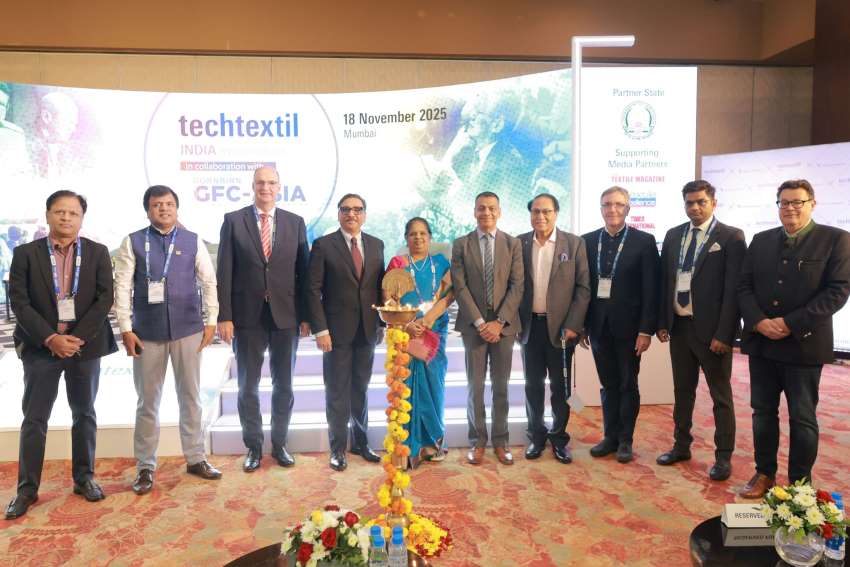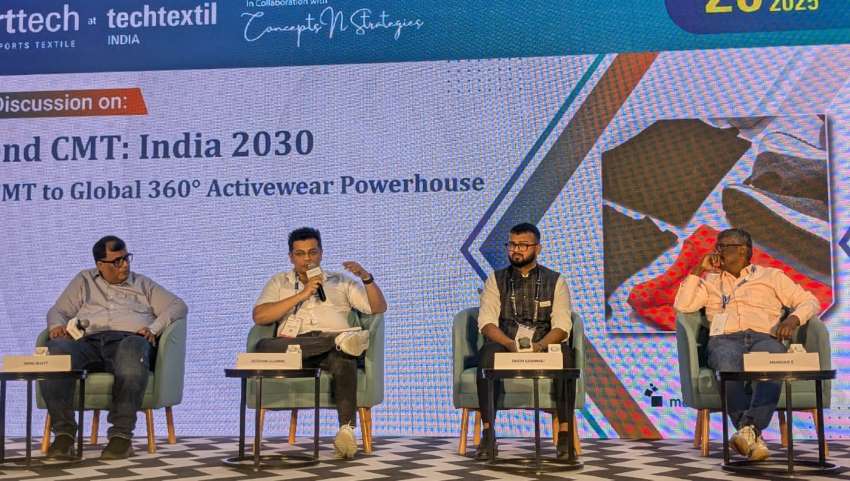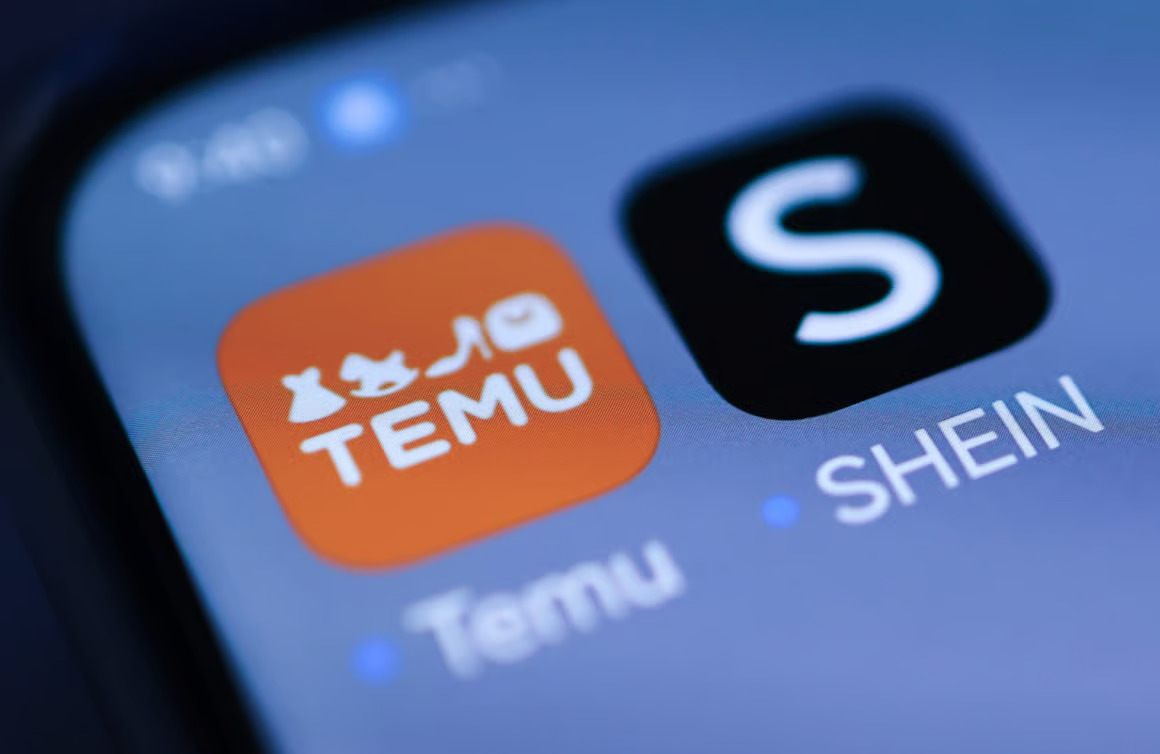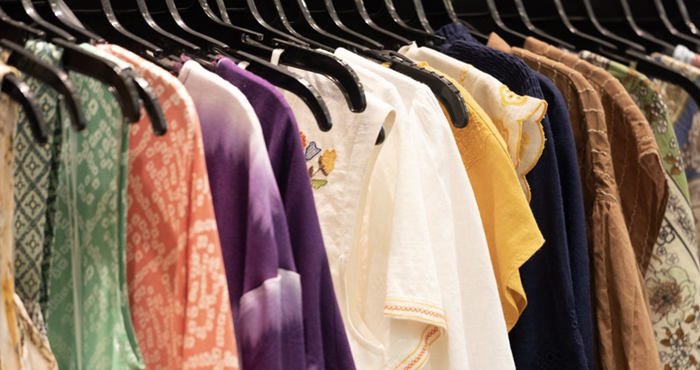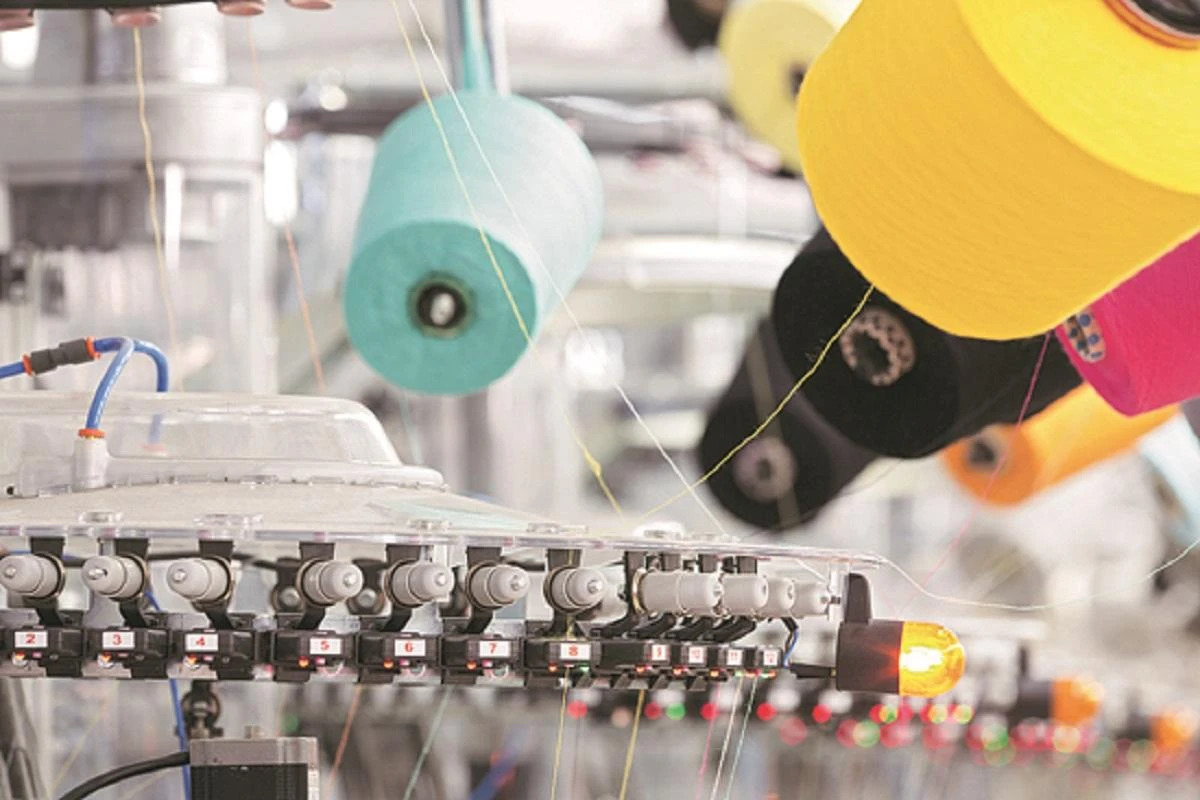FW
On September 1, 2025, amidst the imperial grandeur and contemporary dynamism of Moscow, Indian couturiers Shantnu & Nikhil Mehra unveiled their first-ever women's couture collection, 'Armouré,' at Moscow Fashion Week. For a brand synonymous with redefining menswear for over two decades, this international debut was more than a runway show—it was a bold statement of evolution, cultural diplomacy, and the paradoxical nature of the modern woman.

The setting couldn’t have been more fitting. Moscow, a city where ancient domes meet neon lights, perfectly mirrored the collection's core tension: a fusion of strength and sensuality, romance and resistance. The show was part of a larger global fashion dialogue, as Moscow Fashion Week ran in tandem with the BRICS+ Fashion Summit, a gathering of fashion leaders and innovators from over 65 countries. This provided a powerful platform for Shantnu & Nikhil to position Indian couture not as a niche craft, but as a central, influential voice in the global conversation. As the designers shared, “Moscow represents a cultural crossroad, steeped in imperial legacy yet brimming with contemporary appetite for couture.”
'Armouré': A symphony of paradox
Inspired by the unapologetic glamour and daring spirit of 1930s icons, the 'Armouré' collection is a masterclass in duality. It celebrates a woman who is both intimate and armored, soft yet unyielding. The silhouettes beautifully showcased this contradiction: sharp, sculptural corsets were paired with whisper-thin, fluid drapery, while structured shoulders met cascading crystal embroideries.

The collection’s palette deepened the narrative, moving from dominion reds and midnight blacks to liquid silvers and opulent pearls. Metallic brocades shimmered like armor, and hand-applied embellishments served as both adornment and protection. Each detail, from a pearl-studded shoulder to a sequin-clad power-bodice dress, was symbolic—a reflection of the strength and allure inherent in the modern siren.
For the designers, this collection was about more than just aesthetics. As they explained, “Armouré was imagined around the paradox of the modern woman: sensual yet armoured, intimate yet resistant.
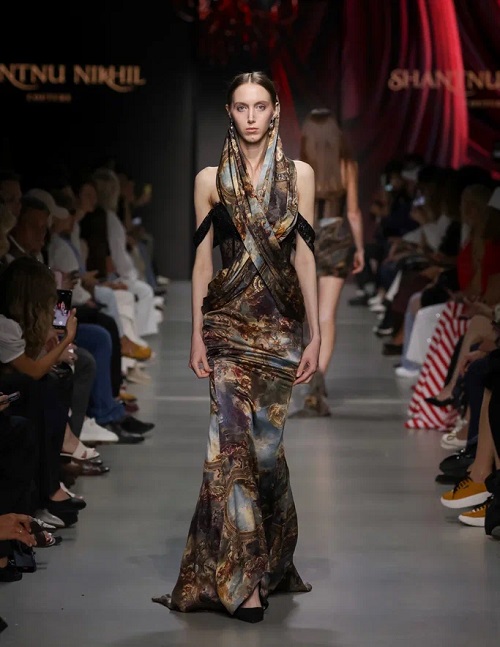
Every detail is symbolic—pearls represent intimacy, crystals embody allure, metallics signify strength, and embroideries carry the legacy of craft.” By weaving traditional Indian techniques into a global, avant-garde language, they proved that craft could be both celebrated and reimagined.
The significance of Moscow
This debut was a strategic move, positioning Shantnu & Nikhil at a pivotal cultural crossroad. As the designers noted, Moscow’s blend of imperial legacy and contemporary appetite for couture made it the ideal canvas.

The Fashion Design Council of India (FDCI) played a crucial role in shaping this cultural bridge, championing Indian fashion on a global stage. As the designers themselves stated, “The Fashion Design Council of India (FDCI) has played a pivotal role in shaping this cultural bridge between India and Russia, the presence of Indian fashion and craftsmanship to a global audience.” Russian Federation Ambassador Denis Alipov affirmed the significance of this collaboration, highlighting how fashion can act as a form of cultural diplomacy—fostering dialogue and celebrating national identity.
The visionaries behind the brand
Brothers Shantnu and Nikhil Mehra founded their label in 2000, quickly earning a reputation for disrupting traditional Indian ceremonial wear. While many designers focused on ornate, traditional aesthetics, Shantnu & Nikhil carved a distinct niche with their rebellious, anti-trend philosophy. They introduced sharp tailoring, structured drapes, and a romantic, often theatrical, sensibility to menswear, a category that was ripe for innovation. Their designs, frequently incorporating military-inspired details and a powerful, androgynous aesthetic, have become a favorite of celebrities and discerning clients who seek modern, unconventional occasion wear.
The brand's identity is built on a foundation of paradox—marrying defiance with romance, structure with fluidity, and heritage with modernity. This signature approach was at the heart of their leap into womenswear, creating a collection that was an extension of their established codes rather than a departure.
By showcasing at Moscow Fashion Week, Shantnu & Nikhil not only launched their womenswear line but also amplified a powerful message: Indian couture is not derivative. It is an original, powerful voice that belongs at the center of the global fashion dialogue, ready to captivate the world—one bold, unforgettable look at a time.

The fashion industry has always thrived on reinvention, but its latest transformation is not being dictated by catwalks in Paris or Milan. Instead, the shift is happening in the cloud, on smartphones, and across digital platforms that are reshaping the way consumers discover, engage with, and ultimately buy fashion.
A new report from ResearchAndMarkets.com forecasts that the global e-commerce market will grow from $9.07 billion in 2025 to $16.50 billion by 2030, at 12.7 per cent CAGR. For fashion and apparel, this isn’t just growth it’s a revolution. What was once a supporting act in the retail world has now become the main stage, and the actors are e-commerce platforms, super apps, and digital-first financial solutions.
Fashion at the forefront
Fashion has emerged as one of the largest growth engines of this digital rise. Online clothing and accessory sales no longer indicate just convenience; they now embody aspiration, accessibility, and global connectivity. With digital natives, Gen Z and Millennials making up the lion’s share of online shoppers, platforms have evolved far beyond static web pages.
Today’s e-commerce solutions are full of digital ecosystems that integrate everything from live-streamed fashion shows to virtual trial rooms powered by Augmented Reality (AR) and Virtual Reality (VR). A consumer in Mumbai can try on a luxury jacket using AR filters before adding it to their cart, while a shopper in São Paulo can browse curated collections from Paris boutiques within a super app.
There are several case studies that highlight this transformation vividly. Saddleback, a premium leather brand, adopted BigCommerce to increase its online presence, achieving scalability without sacrificing customer experience. Similarly, Colombian swimwear label Agua Bendita leveraged VTEX and Stripe to seamlessly expand its international footprint. In Australia, Bulk Nutrients boosted its performance and conversions through BigCommerce upgrades, proving that speed and design are crucial for fashion e-shoppers.
Asia Pacific leads the way
While North America and Europe remain major markets, it is Asia Pacific that is expected to register the fastest growth. Increasing smartphone penetration, a digitally empowered middle class, and the meteoric rise of super apps such as Grab, Gojek, and WeChat are propelling the region forward.
India, in particular, present a fascinating case study. With its young, mobile-first population and growing appetite for fashion experimentation, the country is becoming a testing ground for digital retail innovation. Platforms like Myntra and Ajio are already using AR-powered try-on tools and AI-driven personalization engines. Meanwhile, Reliance and Tata are experimenting with super app models that integrate grocery, fashion, travel, and fintech, echoing the seamless digital ecosystems seen in China.
The power of payments
Perhaps the most transformative enabler of fashion e-commerce’s growth is how consumers pay. The Buy Now, Pay Later (BNPL) model, led by pioneers like Klarna, Afterpay, and Affirm, has democratized fashion spending.
For an industry where a single luxury purchase can cost hundreds or thousands of dollars, BNPL reduces the psychological barrier of ‘sticker shock’. By breaking payments into installments, BNPL boosts affordability while boosting average order values (AOV) by up to 50 per cent. This model resonates deeply with younger generations, who value access and flexibility over outright ownership.
At the same time, super apps are rewriting the rules of convenience. A shopper in Jakarta, for example, might order food through Grab, hail a ride, and then discover a flash sale on sneakers all within the same app. Embedded wallets, loyalty programs, and gamification ensure that fashion brands aren’t just retailers, but part of a lifestyle ecosystem.
Players behind the digital curtain
The battle to dominate this fast-growing market is fierce. Players like Shopify, Adobe Commerce, Amazon Webstore, BigCommerce, and Commercetools etc, are racing to offer brands an edge in scalability, security, and consumer experience.
Shopify Plus for example, has enabled retailers like JB Hi-Fi to handle seasonal peaks effortlessly, a lesson vital for fashion brands navigating unpredictable demand cycles. Commercetools has helped Kmart migrate to a cloud-native platform, proving that modular and flexible solutions are the future.
What’s more logistics and payments providers from DHL to PayPal form the invisible backbone, ensuring that returns, deliveries, and transactions are as seamless as browsing. This behind the scenes ecosystem is as critical as the flashy digital storefronts. Without robust logistics, secure payments, and scalable cloud solutions, fashion’s digital renaissance would remain a dream.
Balancing risk and opportunity
The digital boom is not without its shadows. Cybersecurity threats loom large, as fashion platforms often hold sensitive consumer data for personalization. Breaches could erode the very trust on which e-commerce thrives. Also, customer acquisition costs are rising, forcing brands to innovate through community-led engagement, influencer collaborations, and loyalty-driven ecosystems rather than endless discounting.
Yet the opportunities are staggering. Artificial Intelligence is refining recommendation engines to feel almost like personal stylists. AR and VR are bridging the gap between physical retail and online browsing, offering experiences once unimaginable. And as omnichannel strategies mature, the line between offline boutiques and online stores continues to blur.
Fashion’s digital renaissance
The transformation underway is nothing less than a renaissance for fashion. The runway no longer ends at the end of a catwalk it extends into a consumer’s living room via a smartphone screen. Platforms are not just tools for selling but cultural stages, where fashion identity is crafted, shared, and monetized.
As the global e-commerce platform market marches toward $16.50 billion by 2030, fashion will remain its most visible and influential driver. The industry’s embrace of digital ecosystems from BNPL to AR try-ons signals not just an adaptation to consumer demand but a reimagining of style itself.
In this new era, fashion is no longer bound by borders or boutiques. It is fluid, digital, and endlessly accessible a renaissance not of fabric and thread, but of pixels, data, and imagination.
In H1, FY26, Mothercare reported a decline in retail sales to to £80.7 million, compared to £107.7 million during the corresponding 23 weeks of FY25.
For full-year FY25, sales of Mothercare’s wordwide financial parterns to £230.6 million from £280.8 million the previous year. The brand’s adjusted EBITDA also nearly halved to £3.5 million from £6.9 million.
Their online retail sales also contracted by 24 per cent to £21.8 million during the year while total global store count decreased by 19 per cent to 372.
Mothercare, which licenses the mother-and-baby/toddler brand, attributed this continuous decline in sales to geopolitical instability and the winding down of the previous sales arrangement in the UK with Boots as reasons for this reduction.
However, despite these challenges, Mothercare believes its ‘global brand is now significantly bigger than our current business is able to extract the full value from.’ While a joint venture in India helped stabilize the balance sheet, the firm is now focused on achieving a ‘step change’ in the business, affirms Clive Whiley, Chairman. The company is accelerating discussions with several parties to monetize the operational gearing in the business by restoring critical mass, especially in the UK market, he adds.
World's first AI-powered apparel manufacturing brand, Aitu officially launched in Shanghai under the theme ‘AI Reinvents Sewing Machine.’ The global livestreamed event provided the industry with a clear look at the technological breakthroughs of AI-enabled smart apparel manufacturing, offering new solutions for the leapfrog development of the global garment sector.
Riding the wave of artificial intelligence, Aitu has pioneered significant technological advancements. These innovations have already garnered international recognition, with Aitu winning the prestigious ‘2025 IFA Artificial Intelligence Product Innovation Gold Award’ at the International Consumer Electronics Show (IFA) in Berlin, Germany.
Steven, CEO, Aitu articulates the brand’s core philosophy saying, the essence of AI is to 'master A1 robot,human experience. Driven by the goal of turning tools into partners, Aitu unveiled the world's first AI sewing equipment category.
The main highlight of the launch was the debut of the A1 robot, an autonomously developed industry's first female sewing robot. This milestone not only signifies the maturity of Aitu's AI technology but also highlights its successful real-world integration. The company has already partnered with industry leaders, including the Thailand -based NICE and Wuhan factory, with this joint innovation being pivotal in transitioning AI sewing tech from R&D to practical, large-scale use. This collaboration paves the way for the industry's new AI-coordinated development stage.
Dr Hu, Chief Product Officer, Aitu, introduces the AI10 device as a revolutionary solution designed to capture and leverage the expertise of human operators and technicians. The AI10 boasts impressive efficiencies aimed at solving common manufacturing bottlenecks. It enhances machine adjustment efficiency by 80 per cent and improves operator efficiency by 8-15 per cent, he adds.
Additionally, the device shortens training cycles for new employees by 60 per cent and provides real-time work analysis and capacity-loss warnings, helping factories achieve execution rates of over 90 per cent.
A pioneer in intelligent sewing equipment, the China-based Hikari has launched the world’s first template-free sewing machine - H1 85250. Developed entirely by a Chinese enterprise, this machine marks a transformative leap for smart manufacturing in the apparel sector.
The H1 85250 fundamentally redefines industrial sewing by eliminating the need for bulky, physical templates. This core innovation delivers unparalleled cost savings and significant environmental benefits, capturing the attention of industry leaders across the U.S. and beyond.
The new platform operates on advanced AI-driven technologies that allow it to automatically identify different fabrics and adjust all process parameters in real time. This capability enables seamless ‘multifunctional operation with one-click switching,’ allowing manufacturers to adapt instantly to diverse production demands, minimize downtime, and boost overall efficiency.
At the heart of the H1 85250 is Hikari’s proprietary intelligent thread tension control technology, a development that breaks through century-old structural constraints in sewing machines. The result is flawless, oil-free stitches with no loose threads, easily meeting the stringent quality standards required for high-end apparel.
The template-free technology is poised to deliver immense global benefits. Projections estimate annual savings exceeding $10 million in template costs for the worldwide garment industry. For U.S.-based brands relying on outsourced production, these savings translate directly to a meaningful reduction in manufacturing expenses.
Equally compelling is the machine’s sustainability advantage. By eliminating the consumption of acrylic plates used for traditional templates, the H1 85250 drastically reduces industrial waste. This environmental benefit directly supports global ‘Dual Carbon’ goals and aligns seamlessly with US. corporate ESG (Environmental, Social, and Governance) priorities, proving that high-end quality and eco-conscious production can go hand-in-hand.
Released by the Joint Apparel Association Forum (JAAF), the export performance figures for August 2025 for Sri Lanka’s apparel sector show mixed results. While the country registered a slight decline in monthly exports s compared to the previous year, the industry maintained a healthy cumulative growth across the first eight months of 2025.
In August 2025, total apparel exports by Sri Lanka declined by 1.33 per cent Y-o-Y to $479.14 million, from August 2024. This decline was largely driven by softening demand in key markets. The nation’s dxports to the EU fell by 4.83 per cent, while shipments to the UK dropped by 2.6 per cent.Sri Lanka’s exports to the US, however, showed a modest gain of 0.92 per cent.
Despite the August contraction, the sector sustained positive momentum over the January–August 2025 period. Total year-to-date exports grew by 7.48 per cent to S$3.39 billion from $3.16 billion during the same period in 2024. This cumulative growth was supported by strong performance across all major regions as exports to the EU increased by 14.66 per cent, the US rose by 2.58 per cent, UK by 4.54 per cent and other markets by 9.45 per cent
Commenting on these results, JAAF stated, the month of August reflects the volatility in global markets, with pressure on exports to the EU and UK. However, the organization’s year-to-date performance demonstrates resilience, particularly with strong growth into the EU.”
The organization noted, the industry continues to face challenges but remains focused on enhancing competitiveness, diversification, and maintaining sustained engagement with key trading partners.
JAAF reaffirmed its commitment to collaborating closely with policymakers and stakeholders to ensure the Sri Lankan apparel industry maintains stability and is well-positioned to capture emerging opportunities within an uncertain global economic environment.
On September 23, 2025, prominent Albstadt-based manufacturer of circular knitting and braiding machines, Mayer & Cie, filed a petition with the Hechingen District Court to open insolvency proceedings under self-administration.
A fourth-generation, owner-managed company, Mayer & Cie employs approximately 280 people at its headquarters. The company’s specialized circular knitting and braiding machines are highly valued by textile manufacturers globally, with nearly all production being exported. The employees' salaries and wages are secured for three months through insolvency benefits.
Mayer & Cie is operating in a tumultuous global market, facing a severe combination of decreased demand and rising costs.
The trade dispute between the US and China, coupled with the war in Ukraine, has triggered a worldwide reluctance to invest in new machinery.
A crucial export market for the company, Turkey is grappling with extremely high inflation, severely undermining the competitiveness of local textile manufacturers.
Simultaneously, state-subsidized manufacturers from China are able to offer their textile machinery at significantly lower prices on the global market.
These factors resulted in a devastating sales slump of nearly 50 per cent over the last year, even as the company's operating costs increased.
The decision to file for self-administration provides the company with a legal mechanism to reposition and restructure while maintaining normal business operations. This framework differs significantly from standard insolvency proceedings, as corporate responsibility remains with the current management team, who directly oversee the restructuring process.
To support this critical phase, the management is being advised by an experienced restructuring expert, Martin Mucha of the law firm Grub Brugger, who has joined the company as the General Representative. In a self-administration filing, the competent local court appoints a provisional administrator to monitor the proceedings in the interest of the creditors. Attorney Ilkin Bananyarli from Pluta Rechtsanwalts GmbH has been appointed to this role for Mayer & Cie.
The China International Sewing Machinery & Accessories Show (CISMA) has once again taken center stage in Shanghai, bringing together industry leaders, innovators, and professionals from around the world.
Themed, ‘Smart Sewing Empowers New-Quality Industrial Development,’ CISMA 2025, commenced on September 24, 2025, at the Shanghai New International Expo Center, marking a significant milestone in the industry's journey towards innovation and sustainability.
A showcase of innovation and excellence
Nearly 1,600 leading global companies are participating in CISMA 2025, showcasing cutting-edge technologies, products, and solutions that are transforming the sewing industry. The exhibition features a wide range of innovative products, including intelligent sewing machines, green technology, and integrated digital solutions. These advancements are not only revolutionizing the textile and apparel sector but also contributing to diverse industries such as home furnishings, automotive, and aviation ¹ ².
Key highlights
Record-breaking attendance: As of September 24, the exhibition has attracted 30,432 visitors, representing a 12 per cent Y-o-Y growth. Overseas visitors have increased by 58 per cent, with 7,280 attendees from around the world.
Strategic partnerships: The event has brought together industry leaders, partners, and global workers to discuss the future of intelligent manufacturing and sustainable development.
New product launches: Companies like Shanggong Shenbei Group have unveiled strategic new products, including the ‘All-Powerful King 3,’ which features disruptive breakthroughs in sewing technology .
Industry insights and future direction
CISMA 2025 has also provided a platform for industry experts to share insights and discuss future directions. He Ye, Vice President emphasized the importance of innovation leadership, intelligent development, and global cooperation in driving the industry's growth. The event has highlighted the industry's commitment to developing new quality productivity, building a new industrial system, and laying the foundation for a good start in the 15th Five-year Plan.
A hub for global collaboration
CISMA 2025 has demonstrated its commitment to building a core hub for global collaboration and win-win industrial chains. The exhibition has showcased cutting-edge products and disruptive technologies, while also striving to build a high-performance ecosystem integrating information sharing, technology promotion, trade matching, and industrial collaboration. With its unwavering commitment to innovation and sustainability, CISMA 2025 is poised to propel the industry towards a high-quality, sustainable future.

The US has a major textile waste problem. Every year, millions of tons of discarded clothing and household fabrics end up buried in landfills or burned in incinerators. Yet less than 1 per cent of those discarded textiles find their way back into the system as new fibers. A new report, ‘Rags to Revenue: Unlocking Post-Consumer Textile Recycling in the US’, jointly published by Accelerating Circularity and Accenture, is highlighting what many experts consider one of the most pressing and overlooked sustainability challenges in America. Beyond sounding an environmental alarm, the report makes a bold case for textiles as a significant, untapped economic opportunity.
The scale of the challenge
The US Environmental Protection Agency (EPA) estimates that textiles are one of the fastest-growing waste categories, increasing by nearly 80 per cent between 2000 and 2018. In that year alone, roughly 11.3 million tons of textiles were sent to landfills. Synthetic fabrics like polyester may take centuries to break down, while natural fibers such as cotton release methane a potent greenhouse gas when decomposing. This is not just about reducing waste—it’s about reimagining textiles as valuable resources rather than disposable products, say industry expert familiar with the study. The report’s data paints a grim picture of where used textiles currently go.
Table: Snapshot of current textile waste in the US
|
Destination of collected used textiles |
Percentage |
|
Textile-to-Textile Recycling |
<1% |
|
Downcycled into Wiping Cloths |
30% |
|
Downcycled into Other Products |
20% |
|
Reusable Textiles (National Market) |
9% |
|
Reusable Textiles (Exported) |
91% |
|
Landfill and Incineration |
5% |
The system is a patchwork of inconsistent collection programs, limited sorting capacity, and scattered recycling technology. For recyclers, the lack of large, clean, and uniform material streams creates major bottlenecks. Complicating matters further, blended fibers like poly-cotton, along with zippers, buttons, and dyes, make recycling both technically and economically challenging.
The economic case for circularity
Despite growing consumer demand for sustainable fashion, producing recycled fibers remains more expensive than sourcing virgin materials. This cost gap has slowed adoption, leaving brands reluctant to invest in circular supply chains. As per Rags to Revenue report, the economic calculus could shift if the US develops a nationwide textile recycling infrastructure. The report argues that textiles could become a new revenue stream, driving innovation, job creation, and competitiveness in a global market increasingly focused on sustainability. “Think of it as a domestic manufacturing opportunity hiding in plain sight,” said a sustainability consultant. “We have the waste. We just need the systems to transform it into value.”
Emerging models of circularity
While the barriers are steep, the report highlights companies and initiatives already charting a new course. One case study centers on SuperCircle, a start-up building take-back programs and logistics networks to connect fashion brands with textile recycling facilities. By helping brands sort garments by fiber type, SuperCircle is tackling one of the toughest obstacles in scaling fiber-to-fiber recycling: the need for clean, separated material streams.
Policy innovation is also gaining traction. Extended Producer Responsibility (EPR) laws, already being debated in states like California and New York, would require fashion brands to take financial responsibility for the end-of-life of their products. If enacted, these laws could fund take-back programs, incentivize investment in recycling technologies, and shift accountability from consumers to producers. EPR could be the turning point, say policy analyst. Without that push, voluntary action alone won’t get us to scale.
From Rags to Revenue
For the fashion industry, which accounts for an outsized share of global carbon emissions comparable to aviation investing in textile recycling is not just a reputational imperative but a business necessity. If the US builds the infrastructure now, the report suggests, it could transform a costly waste stream into a profitable industry.
The message from the report is clear: scaling textile recycling in the US is no longer a choice but an opportunity waiting to be seized. Success will depend on collaboration across brands, recyclers, technology innovators, and policymakers. As the report concludes, the challenge is daunting, but the potential payoff environmental, economic, and social is immense. Turning discarded fabrics into valuable fibers could redefine the future of American textiles, proving that yesterday’s rags may indeed be tomorrow’s revenue.
Global textile certification body Oeko-Tex spotlighted sustainability and transparency at Intertextile Shanghai Apparel Fabrics – Autumn Edition (Sept 2–5), participating as a lead exhibitor and voice in Messe Frankfurt’s Econogy platform. The company is marking a decade of its Made in Green label while tackling the challenges posed by fast fashion.
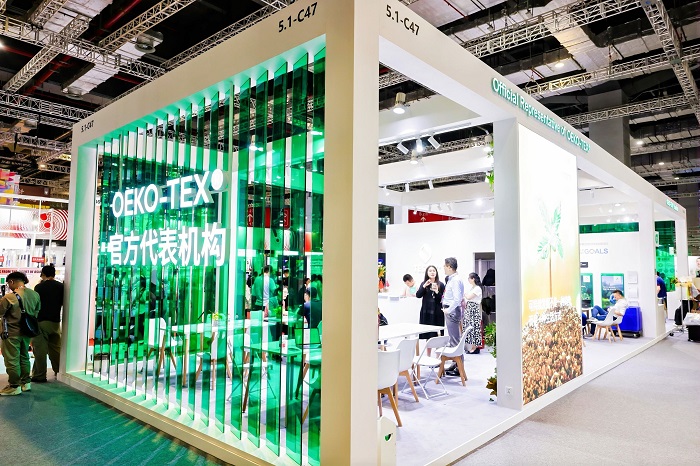
Speaking on the sidelines, Dr. Alfred J. Beerli, CEO of Oeko-Tex, outlined how the organization is tightening its focus on traceability, chemical safety, and circularity, even as fast fashion growth challenges the industry’s sustainability goals.
“Oeko-Tex is one of the oldest certification schemes worldwide — more than 34 years in the market,” Dr. Beerli said. “We started with the Standard 100, which made us very popular, and today 17 institutes worldwide collaborate with us to test garments, leather products, and textiles for leading brands.”
Three decades of certification
Over its 30-year history, Oeko-Tex has issued more than 235,000 certificates globally. The system is built on three core standards:
● Standard 100: This original product-level certification tests textiles for harmful substances, making Oeko-Tex a globally recognized name.
● STeP (Sustainable Textile and Leather Production): A facility- and process-level standard that audits occupational health and safety, fair wages, and environmental management.
● Made in Green: Celebrating its 10th anniversary in 2025, this consumer-facing label combines the other two standards. It provides traceability through a QR code that allows shoppers to track a product back to its manufacturing facility and raw materials. Over 600 facilities worldwide are currently Made in Green certified.
Dr. Beerli described the label as "one of the most premium tools in the market for sustainable textiles and apparel."
Sustainability as a journey, not a badge

The Oeko-Tex CEO stressed that certification is not just a marketing tick-box but a pathway to better business. “It’s a way of operational excellence. You learn your processes better, optimize inputs and outputs, save energy and water, and treat your people fairly. While certification should not be seen as a quick fix to attract more business, it undeniably makes manufacturers more attractive to global brands.”
He added that certification “somehow” prepares manufacturers for emerging compliance regimes worldwide, but the real value lies in efficiency, responsibility, and trust.
Navigating complex compliance
The regulatory landscape is shifting fast. Europe has led on chemical and sustainability laws, though some targets for 2027 are already being recalibrated. Meanwhile, consumer concern is rising sharply in the U.S., especially over PFAS and toxic chemical residues.
“Trusted solutions are becoming indispensable,” Dr. Beerli said. “Oeko-Tex® offers a framework that aligns with these growing demands, not just in Europe but globally.”
Navigating complex regulations and the "Polyester Problem"
Circularity, central to Messe Frankfurt’s Econogy theme, was a focal point in Dr. Beerli’s remarks. But he cautioned that industry ambitions face a raw material reality. “Most garments today are polyester-infected. If we want a truly sustainable future, we need pure fabrics. Multi-fiber blends make circularity almost impossible at scale.”
While acknowledging innovations in fiber separation and recycling, he stressed that scalability remains the bottleneck. “The whole industry has to change — starting with the fiber,” he said.
Asia at the core, India rising
Asia is Oeko-Tex’s biggest market, led by China, followed by India, where adoption is accelerating. Though Oeko-Tex does not operate labs in China or India, all testing is conducted at its 17 partner institutes in Europe and Japan to maintain consistent quality.
“China has the full supply chain at scale,” Dr. Beerli said. “India also has the full supply chain, but not yet to the same maturity. Still, we see rising ESG preparedness, good penetration, and very strong potential.”
The Road Ahead: India Summit
Looking ahead, Oeko-Tex will host its India Summit in December 2025, bringing together leading fiber, yarn, and fabric producers. Organized in collaboration with its Indian representation, the summit aims to align the country’s suppliers with the evolving global ESG and sustainability compliance agenda.
“It will be an Indian event, with all the famous names of the supply chain present,” Dr. Beerli confirmed. “I am a big supporter of collaboration, because no single organization can cover the whole world. We have to work together and find new solutions for the future of our planet.”
As sustainability regulation tightens worldwide and fast fashion consumption accelerates, Oeko-Tex positions itself as both watchdog and enabler. “We cannot save the world alone,” Dr. Beerli reflected. “But we can help manufacturers become better — and provide consumers with the transparency they increasingly demand.”



